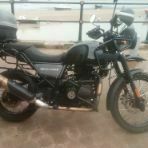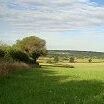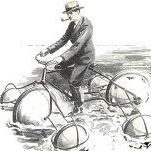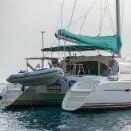-
This post cannot be displayed because it is in a forum which requires at least 10 posts to view.
-
This post cannot be displayed because it is in a forum which requires at least 10 posts to view.
-
This post cannot be displayed because it is in a forum which requires at least 10 posts to view.
-
This post cannot be displayed because it is in a forum which requires at least 10 posts to view.
-
This post cannot be displayed because it is in a forum which requires at least 10 posts to view.
-
This post cannot be displayed because it is in a forum which requires at least 10 posts to view.
-
This post cannot be displayed because it is in a forum which requires at least 10 posts to view.
-
This post cannot be displayed because it is in a forum which requires at least 10 posts to view.
-
I will put some feelers out. Do you have means of transport?
A couple of points that may help.
I would take your dimensions for the planks more from what's there for primary width and a good look over a surviving bow and stern (Sirius and Arcturus?) if possible. My limited experience of Walkers is that planks were ultimately more based on what was available than to drawing - there are parts in the chine of Hagley where a strip was fixed in on top of the plank in places to bring it up to width, and having spoken to the son of one of the builders, they really weren't that precise (apparently they were half cut on beer a lot of the time!) The lengths would never have been pre-determined, planks being used at full length as they came from bow and stern and then cutting in the middle to fit. Hagley was a mix of 3 and 4 planks along the length, with a couple at 5 where they had used 15-20' planks in from each end and filled in the short bit in the middle. Milling seems to be simple through-and-through sawn, with cupping controlled by fixings and planing out at the end. I found it much easier to fit new planks over the old, leaving the new plank wide, than trying to template up that accurately. I did use templates to check planks were big enough but any plank with a twist as well as a bend throws the profile off. I cut my templates out of damp proof membrane as I could tack a length to the hull, feel where the plank edges were and slit it. I could then roll the templates up for storage (I still have them), writing any notes on with a permanent marker.
Take particular note of the condition of the chine planks at the bow and stern - these get extremely wide - wider than your average timber will be presented at. If you need these planks then it's worth starting looking early.
I wouldn't personally worry too much about trying to replicate original plank joint positions. You can afford to cut the bad fore end of a plank and leave the back part alone if it's still sound. This approach means you don't need so many long planks - what is important is to stagger the scarf joints over the knees so you wouldn't do this to all planks around the bow for example, but you could cut 12' out of one and 20' out of the ones above and below with no problems. It would be good to have a 25' plank on each corner, but more than that isn't essential. Bending in much under 12' is difficult. This approach gives you the shape and is more about repair, restoration and conservation (retention of original material where possible) rather than trying to replicate something which is largely conjectural anyway. In similar vein, it doesn't look so nice but if the top part of the sides and shearing are both sound then it is possible to cut the shearing across a panel in a horizontal line and only replace part of it. Trying to replace a plank without replacing the shearing behind it is doomed though - the shearing always breaks.
I wouldn't worry too much about seasoning for planks below the water line. In theory to achieve air dry you need six months per inch of thickness, so a year for a hull plank, but in practice if it goes in wetter than that, it won't shrink while it's in the water!
This time of year is good to get milling done. Being cold and damp the surface of the timber doesn't dry faster than water can migrate out from the centre, so the surface doesn't start to shrink before the middle, resulting in cracks. Do you have a source for milling the timber you have access to? If not I know a few - whereabouts in the country do you need the mill?
I would strongly suggest that you have a look at your source for oak and look through the shorter lengths for curves for knees, cabin frames and shearing. Making shearing is extremely boring - you don't want to be paying a high rate for it so it's worth considering separating that job out to someone with fast equipment (bandsaw) and a lower skilled hourly rate. In my case, the hourly rate was the same as I milled all the timber.
Have you got the timber for the stem and stern posts? Stern post is as I recall pretty straight but the stem post has a distinctive curve - I might have a piece that would make one (it has the necessary lump on the top for the return). Not sure what condition it's in but if needed I can have a look. You need a good idea of the bow shape, including in plan, before starting on the posts. It makes a surprising difference to the piece of timber you need.
Are you doing any of the work or are you having it all done? If you are doing any yourself then happy to comment on tools and sundry materials, or anything else that may be useful (so long as I'm not boring you!)
Alec
3
points
-
This post cannot be displayed because it is in a forum which requires at least 10 posts to view.
-
This post cannot be displayed because it is in a forum which requires at least 10 posts to view.
-
This post cannot be displayed because it is in a forum which requires at least 10 posts to view.
-
This post cannot be displayed because it is in a forum which requires at least 10 posts to view.
-
This post cannot be displayed because it is in a forum which requires at least 10 posts to view.
-
This post cannot be displayed because it is in a forum which requires at least 10 posts to view.
-
I'd commercialise the whole thing and instead of those "rate this scene" things we've had from CRT we'll get a "rate this boat" on a scale of +10 to -10 kind of exercise with the inevitable outcome that lovely looking small traditional boats that bring joy to the public are paid to cruise the system and purple clone craft bricks with corny names, pram hoods and stick-on vinyl lettering will pay about five grand a year.
3
points
-
I have played with both (oak framed construction and wooden canal boats). Boats are decidedly easier on the whole.
The image below shows the single most awkward thing I have had to make - the post connecting a ridge beam and spanning beam. Both beams were already in place, as was the whole roof over the ridge beam, held up with an Acrow. The post had to connect them. It slides in to the end of the ridge beam using an open tenon (I would have preferred a positive lock but no option on this one as I couldn't lift the ridge beam or drop the spanning beam) and then uses a sliding tenon driven downwards into the mortice in the spanning beam, with a second spacer and cross-wedges to lock it in. The clue that it is a sliding tenon is that it is pegged into both the beam and the post. Figuring out the correct joint and then making the very deep mortice (mallet and chisel), and then installing it without damaging the adjacent water tank and associated plumbing or the new roof was extremely awkward. One thing about this joint is that you only get one shot - once it's in, that's it. The other complication is that whilst it would normally be built green, the fact that the rest of the structure was dry by this time meant I had to use seasoned timber to avoid differential shrinkage, making it much hard to cut. The post was therefore cut as a blank at the same time as the other two beams so that it was ready.
Comparatively, there are no really difficult parts on a wooden boat. It's just a matter of learning how the timber will move and cutting the appropriate shaped parts with the right level of accuracy. We rebuilt Hagley at Jem Bates' yard which is where I learned, and then I did Samson with my wife.
Alec
2
points
-
-
This post cannot be displayed because it is in a forum which requires at least 10 posts to view.
-
This post cannot be displayed because it is in a forum which requires at least 10 posts to view.
-
This post cannot be displayed because it is in a forum which requires at least 10 posts to view.
-
This post cannot be displayed because it is in a forum which requires at least 10 posts to view.
-
This post cannot be displayed because it is in a forum which requires at least 10 posts to view.
-
This post cannot be displayed because it is in a forum which requires at least 10 posts to view.
-
This post cannot be displayed because it is in a forum which requires at least 10 posts to view.
-
This post cannot be displayed because it is in a forum which requires at least 10 posts to view.
-
This post cannot be displayed because it is in a forum which requires at least 10 posts to view.
-
Feeling like an idiot beats the alternative!
Open all your doors, hatches and windows NOW. There will still be a lot of CO present inside the boat.
You NEED to replace all the warm air in your boat with the nasty cold stuff from outside.
If you have a big fan use that too. Get the boat cold and keep checking your CO alarm. If it doesn't have a PPM gauge on it see if you can beg borrow or steal one off a nearby boater.
2
points
-
This post cannot be displayed because it is in a forum which requires at least 10 posts to view.
-
This post cannot be displayed because it is in a forum which requires at least 10 posts to view.
-
This post cannot be displayed because it is in a forum which requires at least 10 posts to view.
-
This post cannot be displayed because it is in a forum which requires at least 10 posts to view.
-
This post cannot be displayed because it is in a forum which requires at least 10 posts to view.
-
Adding to my earlier post I think the principle was prevention. If you have well maintained mortar joints you don't get weed growth. Viaducts and large retaining walls would be beyond the capability of simple manual clearance. It comes back to undertaking routine minor repairs which are required long before there is any threat to the performance of the railway sat on or under the structure in question.
2
points
-
This post cannot be displayed because it is in a forum which requires at least 10 posts to view.
-
This post cannot be displayed because it is in a forum which requires at least 10 posts to view.
-
This post cannot be displayed because it is in a forum which requires at least 10 posts to view.
-
This post cannot be displayed because it is in a forum which requires at least 10 posts to view.
-
This post cannot be displayed because it is in a forum which requires at least 10 posts to view.
-
With a name like @Slow and Steady what do you need a rev counter for?
2
points
-
This post cannot be displayed because it is in a forum which requires at least 10 posts to view.
-
This post cannot be displayed because it is in a forum which requires at least 10 posts to view.
-
I'd suggest that a 'couple of lemons' are totally non-queezable.
The DEFRA Grant is more likely to drop to £0 than increase by even 1% and that is some 25% of their total income.
Return on Investments (~25% of total income) - if they can show an return increasing by 50% then they are in the wrong jobs and should be working in the City.
C&RT are unlikely to get a £3.8m 'Covid Job retention grant in the future (so 2020/21 income figures are already artificially high)
Third party income (Strad, cyclists, Lotto, grants, councils etc) (12% of total income) is probably squeezed to near max - some more may be available but how much ?
That leaves only 3 sectors of income generation that are truly variable and could be used to raise the income levels
Boaters
Utility charges (water extraction etc etc)
Voluntary giving (chuggers etc)
These three sectors account for ~£85m, some 40% of total income.
These three sectors are each going to need to produce more than 100% increase in income to generate the £100m under discussion.
So far the charity giving has been a disaster with costs of generating the income being some £5m higher then the income generated, so in effect a drain on income rather than an income source.
There is always another way of generating more disposable income - reduce costs !
There seems to be a huge empire of Directors, Regional Managers, Local Managers etc etc. surely for such a small organisation "there are too many Chiefs and not enough Indians" !!
2
points
-
This post cannot be displayed because it is in a forum which requires at least 10 posts to view.
-
This post cannot be displayed because it is in a forum which requires at least 10 posts to view.
-
This post cannot be displayed because it is in a forum which requires at least 10 posts to view.
-
This post cannot be displayed because it is in a forum which requires at least 10 posts to view.
-
This post cannot be displayed because it is in a forum which requires at least 10 posts to view.
-
This post cannot be displayed because it is in a forum which requires at least 10 posts to view.
-
This post cannot be displayed because it is in a forum which requires at least 10 posts to view.









